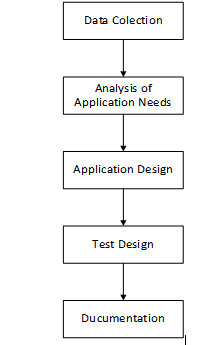Parameters Monitoring Automation Kiln Manufacture Based Optical Character Recognition (OCR) with The Template Matching Method
Keywords:
Digital Image, Optical Character Recognition, Kiln Manufacturing, Early warningAbstract
One of the pieces of equipment used in the combustion-based process of creating ceramic tiles is a kiln production machine or oven. To make sure the combustion process runs smoothly, 39 parameters on the kiln engine are closely monitored, and it is manually determined if the value of these parameters exceeds the minimum or maximum limits based on the data produced by the image on the kiln engine. Losses for the company are caused by human error, carelessness, and other characteristics while these metrics are being monitored. In order to minimize losses, a monitoring system that can automate the settings of ceramic tile combustion engines is required. The initial analysis's findings are obtained using a LAN (Local Area Network) sensor recorder, which displays parameter data that can be accessed as an image rather than as digital alphanumeric data that cannot be processed directly and must instead be converted into alphanumeric data as a data source. The image is turned into alphanumeric data using the template matching technique introduced with optical character recognition (OCR), and the generated data is then compared with the given minimum or maximum parameter values. This gadget will issue an early warning message if the conversion result is more than the minimum or maximum limit. The system prototype used in this study for converting image data into alphanumeric data achieved an accuracy of 100.00% and was able to send early warning notifications in accordance with parameters that were above the established minimum or maximum limits.
Downloads
References
P. N. Andono, T. Sutojo, and others, Pengolahan citra digital. Penerbit Andi, 2017.
D. F. Campbell, “Recent electric furnace developments in Europe,” Transactions of the American Institute of Electrical Engineers, vol. 54, no. 10, pp. 1048–1050, 1935.
J. Cohen, “Resistance-Heated High Vacuum Furnace for Temperatures to 1400° C,” Review of Scientific Instruments, vol. 31, no. 3, pp. 267–270, 1960.
Istiadi et al., “Classification of Tempeh Maturity Using Decision Tree and Three Texture Features,” JOIV : International Journal on Informatics Visualization, vol. 6, no. 4, pp. 883–889, Dec. 2022, doi: 10.30630/JOIV.6.4.983.
A. Chaudhuri et al., “Optical character recognition systems for Hindi language,” Optical Character Recognition Systems for Different Languages with Soft Computing, pp. 193–216, 2017.
A. L. Hananto, S. Sulaiman, and S. Widiyanto, “Comparison of vertical distance and sliding windows method in brass plated tire steel cord (bptsc) diameter measurement,” ICIC Express Letters, vol. 14, no. 11, pp. 1129–1138, Nov. 2020, doi: 10.24507/icicel.14.11.1129.
B. Nunamaker, S. S. Bukhari, D. Borth, and A. Dengel, “A Tesseract-based OCR framework for historical documents lacking ground-truth text,” in 2016 ieee international conference on image processing (icip), 2016, pp. 3269–3273.
T. M. Breuel, A. Ul-Hasan, M. A. Al-Azawi, and F. Shafait, “High-performance OCR for printed English and Fraktur using LSTM networks,” in 2013 12th international conference on document analysis and recognition, 2013, pp. 683–687.
D. Putra, “Pengolahan citra digital,” pp. 1–73, 2010.
M. Chui, M. Loffler, and R. Roberts, “The internet of things,” 2010.
M. Cheriet, N. Kharma, C. Suen, and C.-L. Liu, Character recognition systems: a guide for students and practitioners. John Wiley & Sons, 2007.
A. L. Hananto, S. Sulaiman, and S. Widiyanto, “The Similarity Measurement of Brass Plated Tire Steel Cord Edge Based on Computer Vision,” International Journal of Advanced Science and Technology, vol. 29, no. 6s, pp. 1549–1557, Apr. 2020, Accessed: May 20, 2023. [Online]. Available: http://sersc.org/journals/index.php/IJAST/article/view/9298
A. S. Prabuwono and A. Idris, “A study of car park control system using optical character recognition,” in 2008 International Conference on Computer and Electrical Engineering, 2008, pp. 866–870.
A. L. Hananto, S. Sulaiman, S. Widiyanto, and A. Y. Rahman, “Evaluation comparison of wave amount measurement results in brass-plated tire steel cord using RMSE and cosine similarity,” Indonesian Journal of Electrical Engineering and Computer Science, vol. 22, no. 1, pp. 207–214, Apr. 2021, doi: 10.11591/IJEECS.V22.I1.PP207-214.

Downloads
Published
How to Cite
Issue
Section
License

This work is licensed under a Creative Commons Attribution-ShareAlike 4.0 International License.
All papers should be submitted electronically. All submitted manuscripts must be original work that is not under submission at another journal or under consideration for publication in another form, such as a monograph or chapter of a book. Authors of submitted papers are obligated not to submit their paper for publication elsewhere until an editorial decision is rendered on their submission. Further, authors of accepted papers are prohibited from publishing the results in other publications that appear before the paper is published in the Journal unless they receive approval for doing so from the Editor-In-Chief.
IJISAE open access articles are licensed under a Creative Commons Attribution-ShareAlike 4.0 International License. This license lets the audience to give appropriate credit, provide a link to the license, and indicate if changes were made and if they remix, transform, or build upon the material, they must distribute contributions under the same license as the original.





